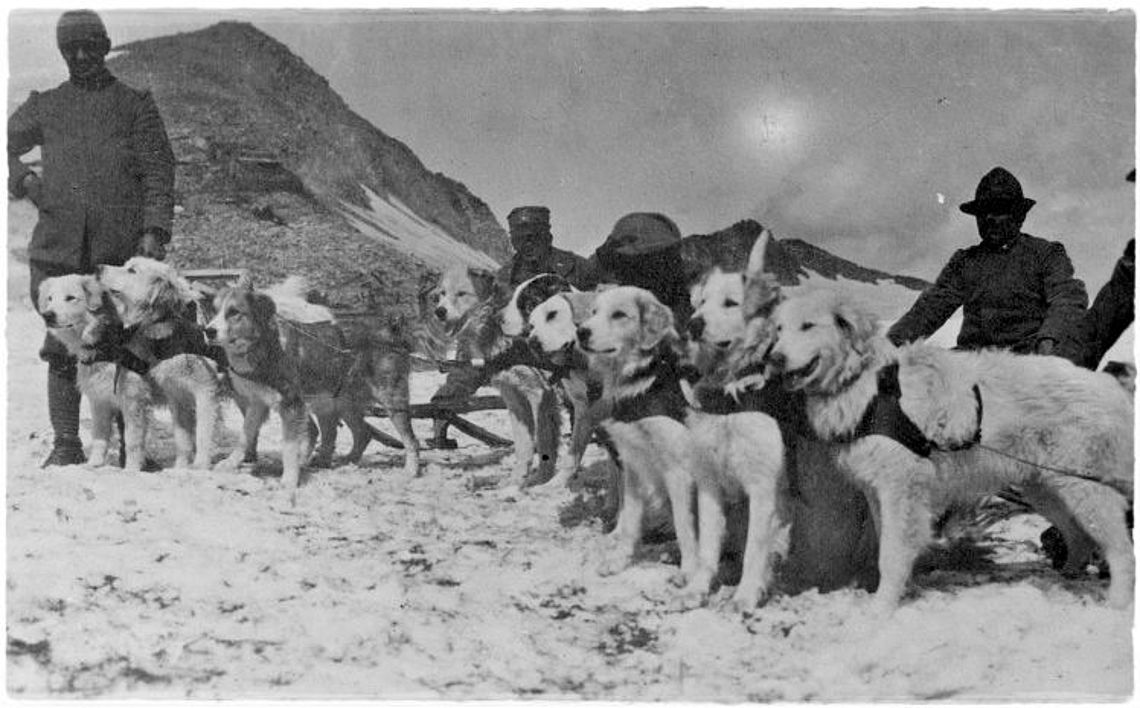When back in 1917 the World War I took on the dimensions of a trench war, the Italian troops were situated, among other, on the harsh snowfields of Adamello and Ortles-Cevedale in Northern Italy. In the narrow trenches, sometimes as high as 300m above the sea level, the Italian soldiers faced bravely the Austrian-Hungarian troops, but even more bravely the harsh and hostile climate.
In such a hostile and difficult climate even things that were easy to manage at level ground, became a problem in that hostile and difficult environment, among ice and cold. The main issue however was the food supply to the troops; narrow military viaducts dug up in the snow and ice were the only access, often within shooting distance of the enemy.
It was at that point that someone came up with the idea to support the Alpinos and their mules by the dogs, using them to provide supply to the more remote positions. For practical reason (surely in war times there was no possibility to get Nordic sled dogs from abroad) the choice fell upon the national Maremma guarding dog. First of all, the dog had to be rustic and strong, resistant to heavy workloads and the harsh climate conditions; the coat should neither be too short in order to protect the animal from the cold, nor too long or curly, as this type of coat would hold the snow that would freeze and add unnecessary weight to the dog. Moreover, white coat was desirable for pure mimetic reasons.
And that’s how a decent number of animals was recruited from the Central-Italian transhumant shepherds and sent to the front after a short training. The strong temperament of the Maremma gave the best results in that occassion; in groups of 2 or 3 they pulled small carts or sleds, supplying the troops with food and ammunition for the time necessary, gaining deep gratitude form the tough soldiers. Lashed by icy wind and snow, blinded by the reflections of the glaciers, they moved up along the steep viaducts, concentrated on transporting their precious freight; never impatient or tired, with great discipline like true soldiers, almost aware that they were trusted with the survival, the life of those boys who fought in the first rows.
Among all the shepherding dogs, those that were completely white were the perfect ones for pulling carts or sleds with freights up to 80-90 kilos. Those with marbled coat on the other hand were the better choice for carrying freight on their back, and were used when the transport had to be faster to move out from the line of fire quickly.

